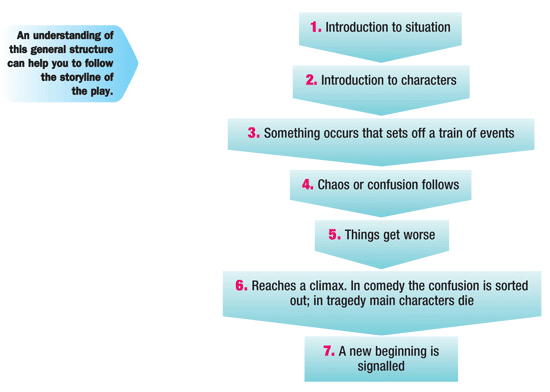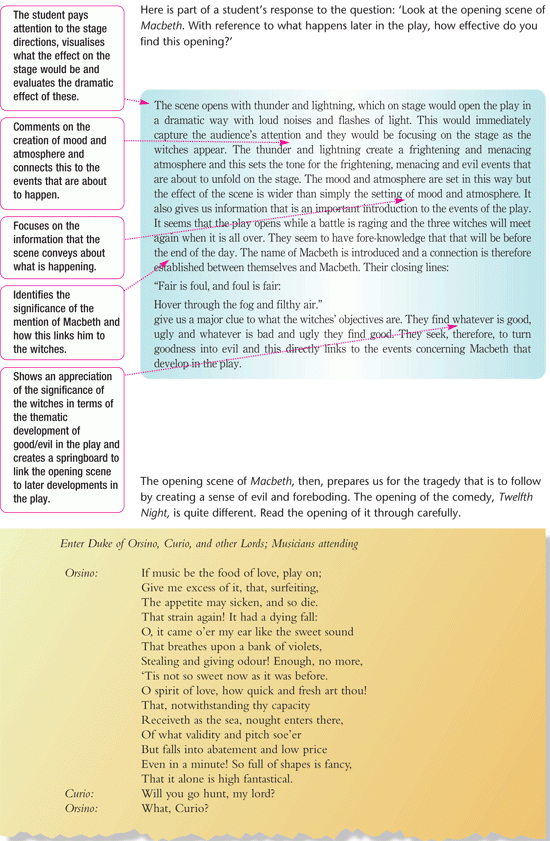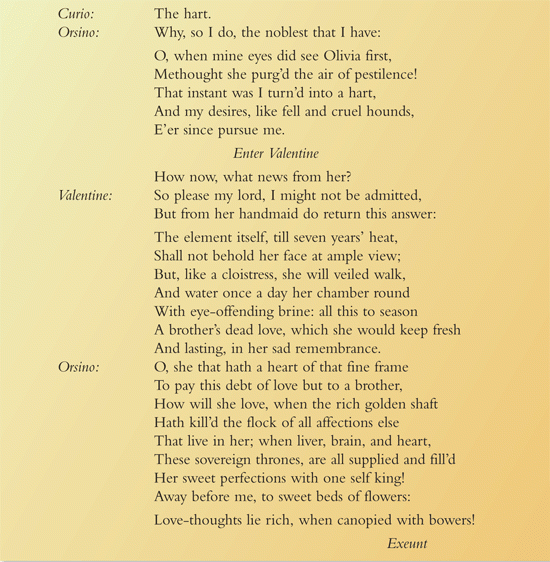Reading Texts
There are a number of things you can do to help your understanding of Shakespeare's work:
- Read the play thoroughly so that you get a basic idea of who the characters are and what is happening.
- See the play in performance – on the stage if possible but, if not, then try to get hold of a video of it (a video store or your local school/college library may be able to help).
- Imagine how the action might take place as you read the play. • Act out some of the scenes to see how they could be performed. • Make notes on each scene to build up a picture of how the plot develops.
This video will help you understand how to read Shakespeare’s plays.
As you are studying the plot of your play, you will begin to notice things about how that plot is put together and develops – these are things to do with structure.

Here is a plan of the basic structure of Romeo and Juliet:
1. Introduction to the situation – the feud between Montagues and Capulets.
2. Introduction to the characters – first of all Romeo and later Juliet.
3. Incident which provides starting point to play – Romeo meets Juliet.
4. Chaos and confusion – Romeo and Juliet have to keep their love and marriage a secret from everyone. Romeo kills Tybalt.
5. Things get worse – Juliet’s parents try to force her to marry Paris. The Friar’s plan with the potion. His message to Romeo fails to get through.
6. The climax of the play – Romeo kills Paris, then kills himself and Juliet kills herself.
7. The feuding Montagues and Capulets are brought together and the play ends in a spirit of harmony.
Reading Macbeth and Twelth Night


Think about the way the above scene opens - Here are some points you might have noted:
- The lovesick Orsino is introduced.
- A perhaps excessively romantic atmosphere is created.
- It suggests something sentimental and self-indulgent about Orsino’s attitude to love.
- It reveals that Orsino is in love with Olivia but his suit has been rejected.
- We are told that she intends to isolate herself and mourn her dead brother for seven years.
- When looking at the opening scene of the play you are studying, be aware of all its aspects – the giving of information, introducing characters, creating atmosphere and mood, establishing thematic ideas.
- Now look at the opening scene of the play you are studying and make a note of how Shakespeare uses the scene to create an effective opening to the play.
